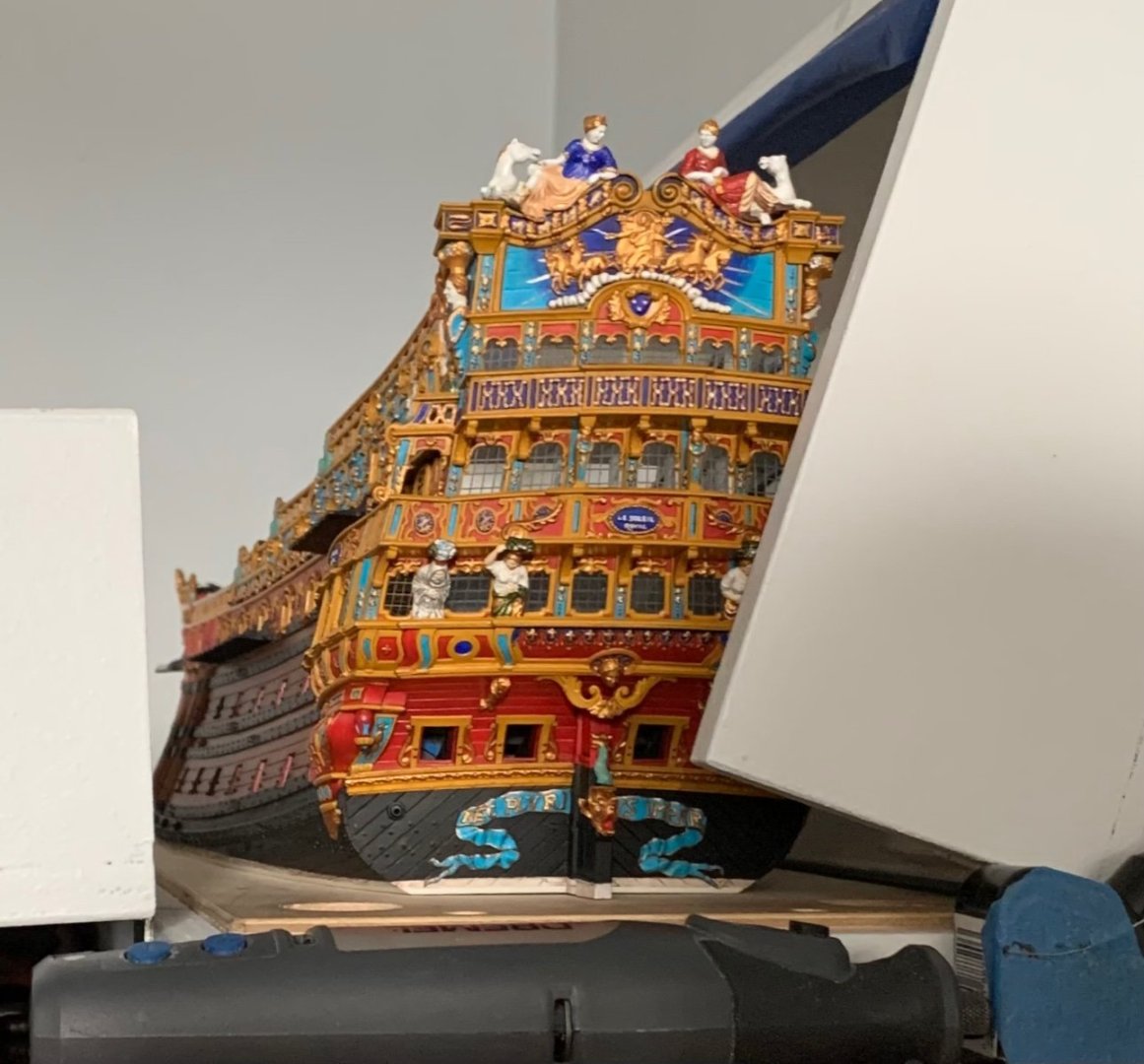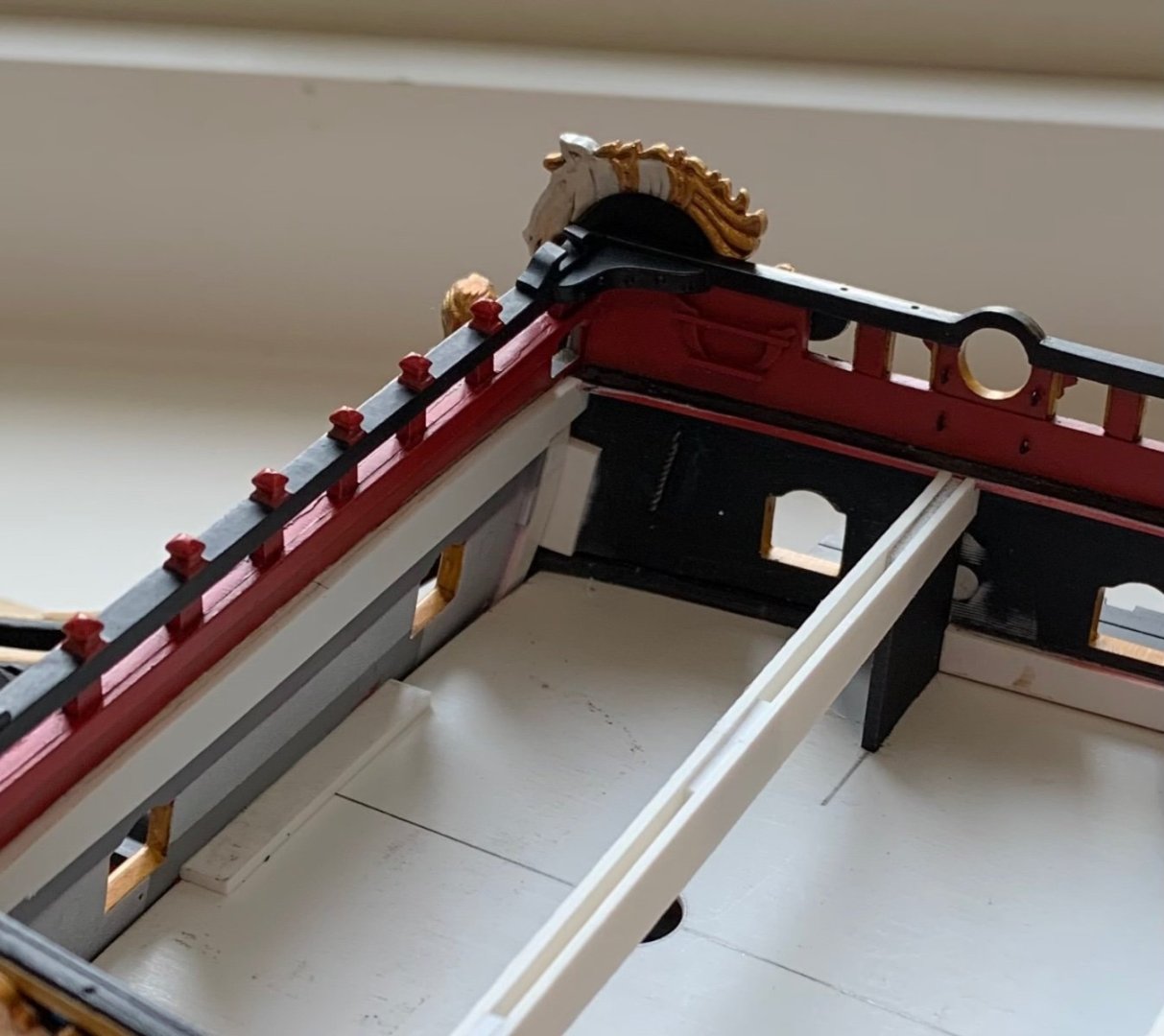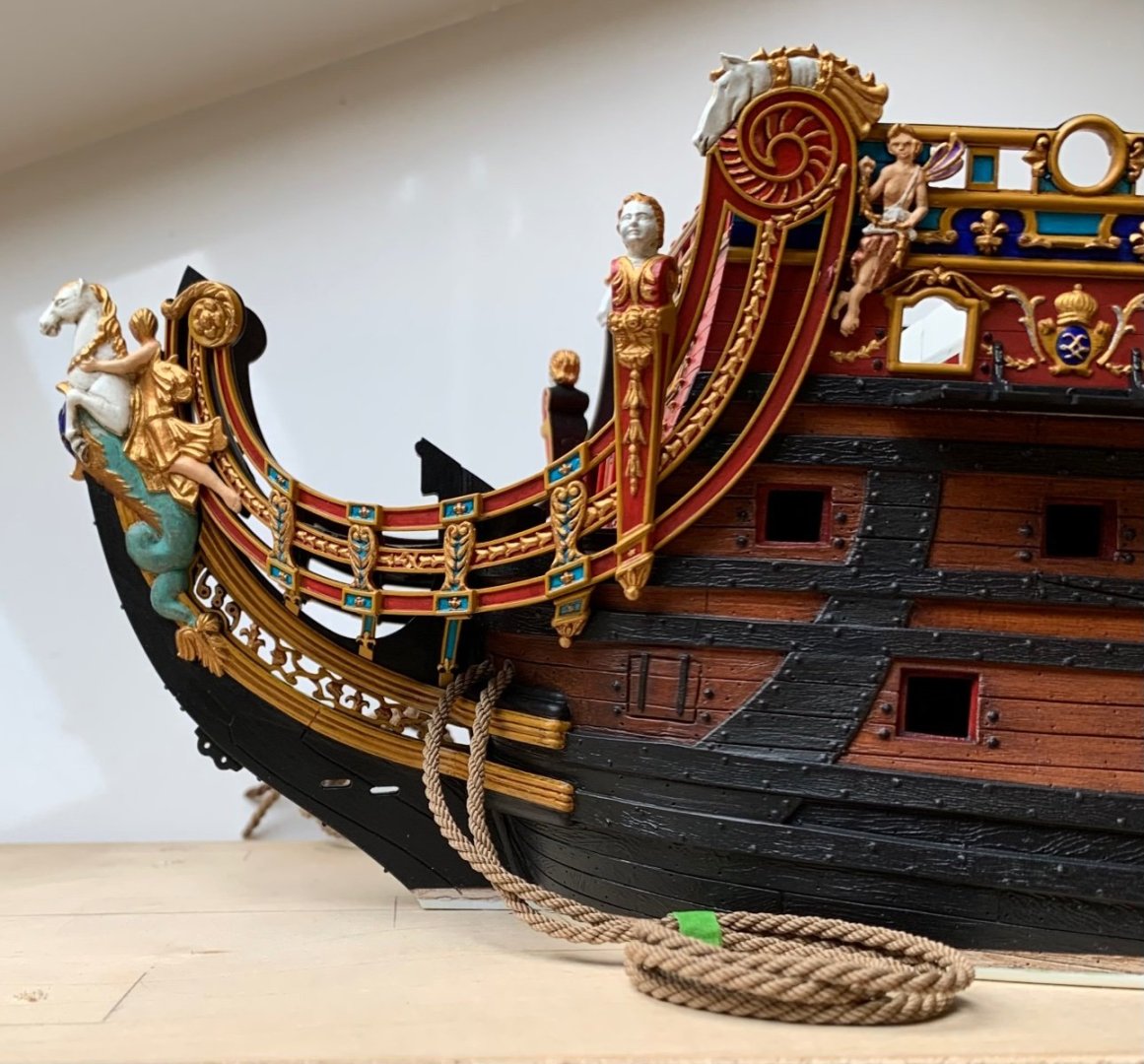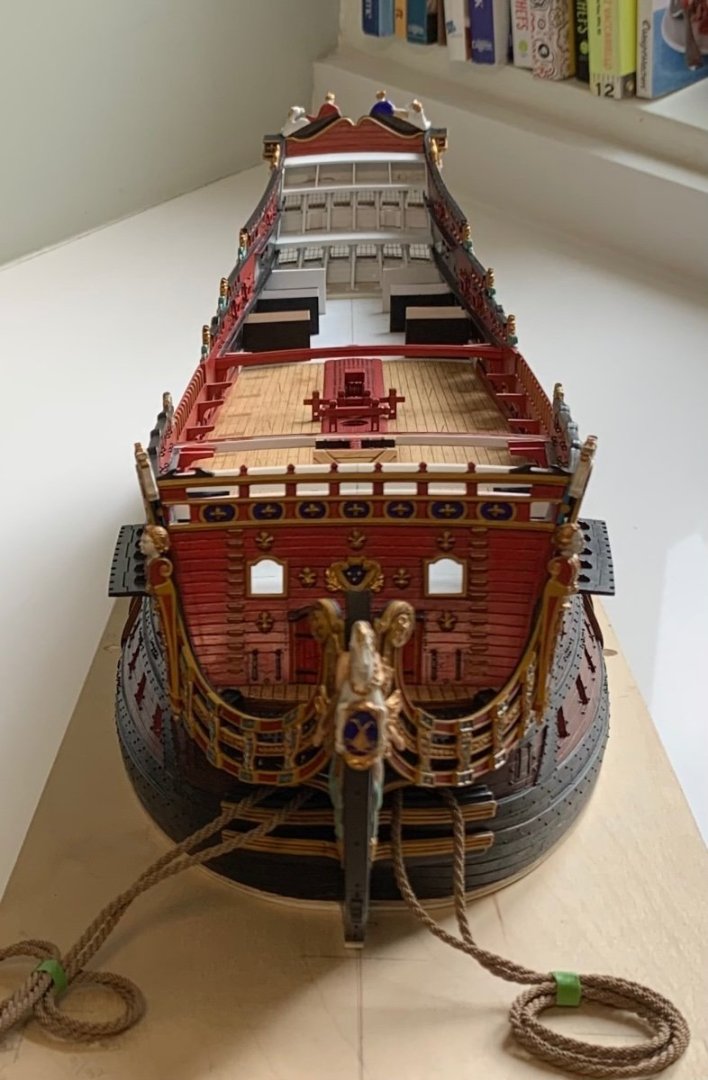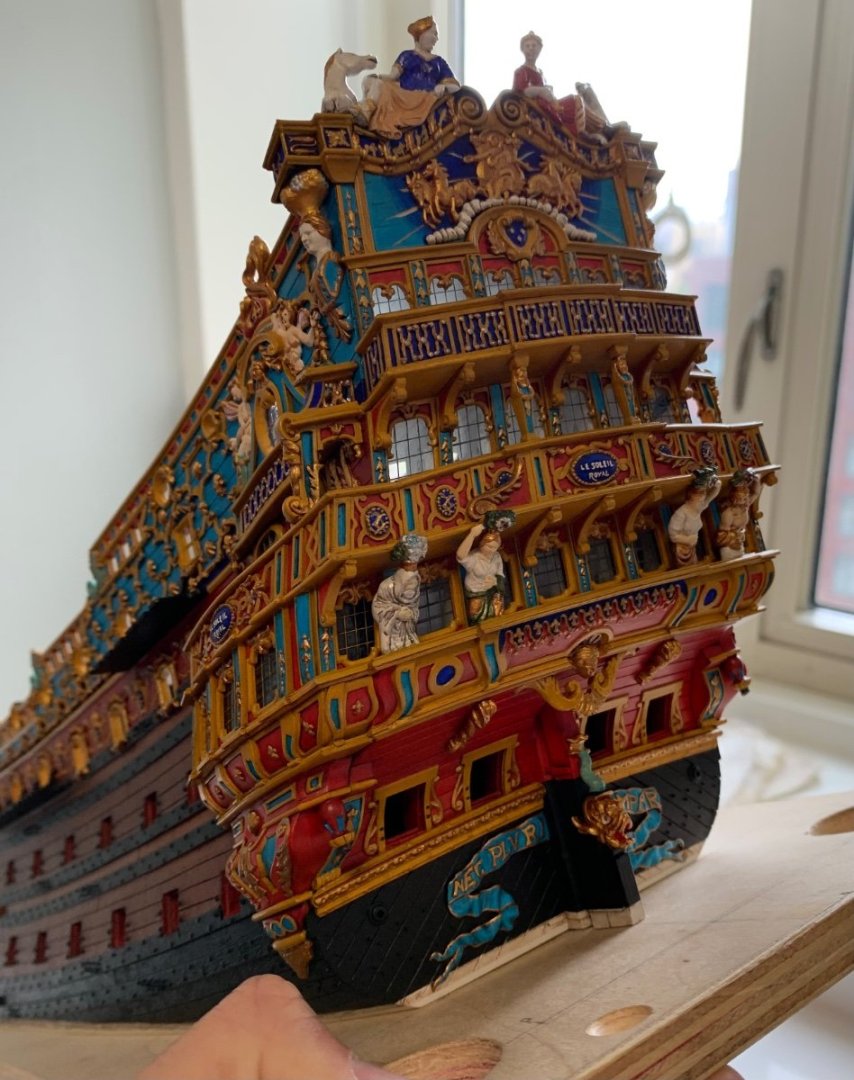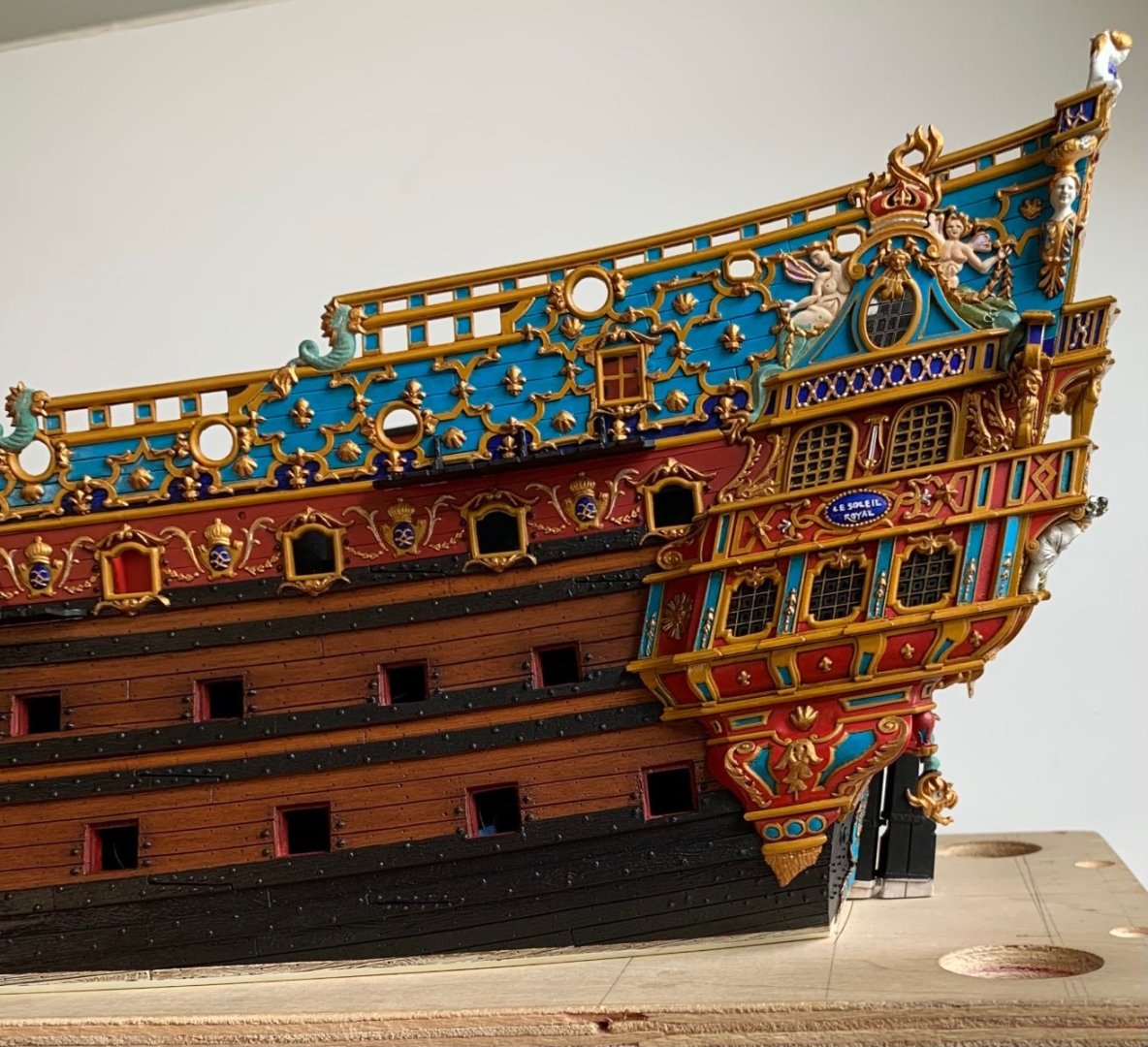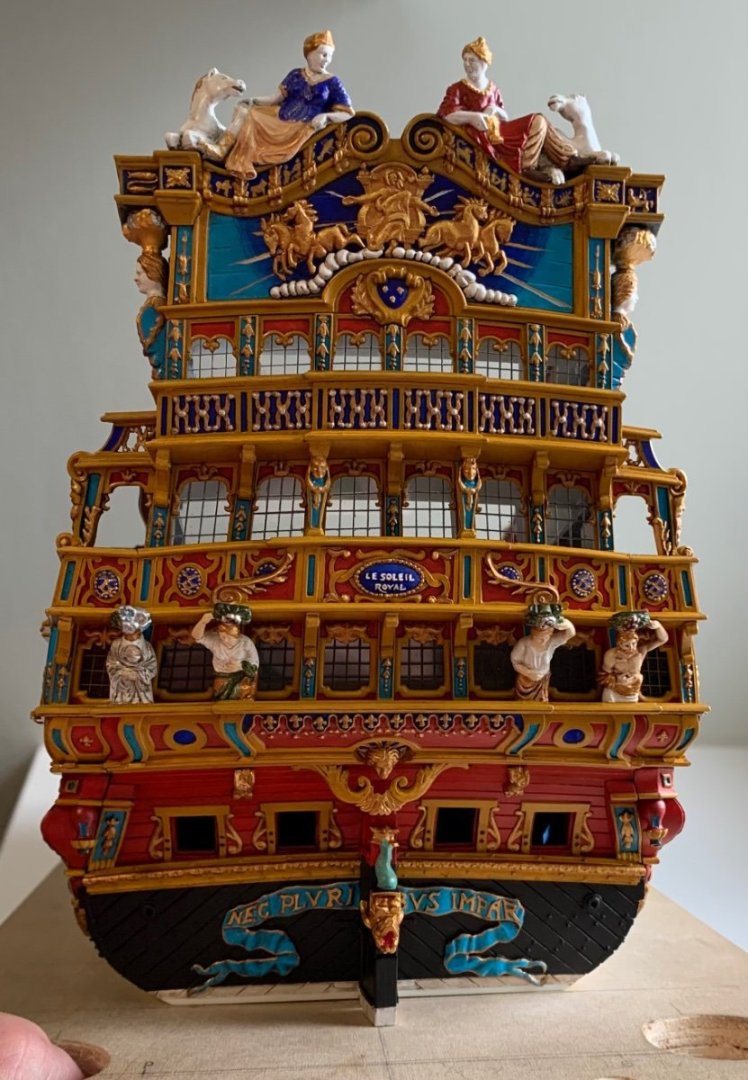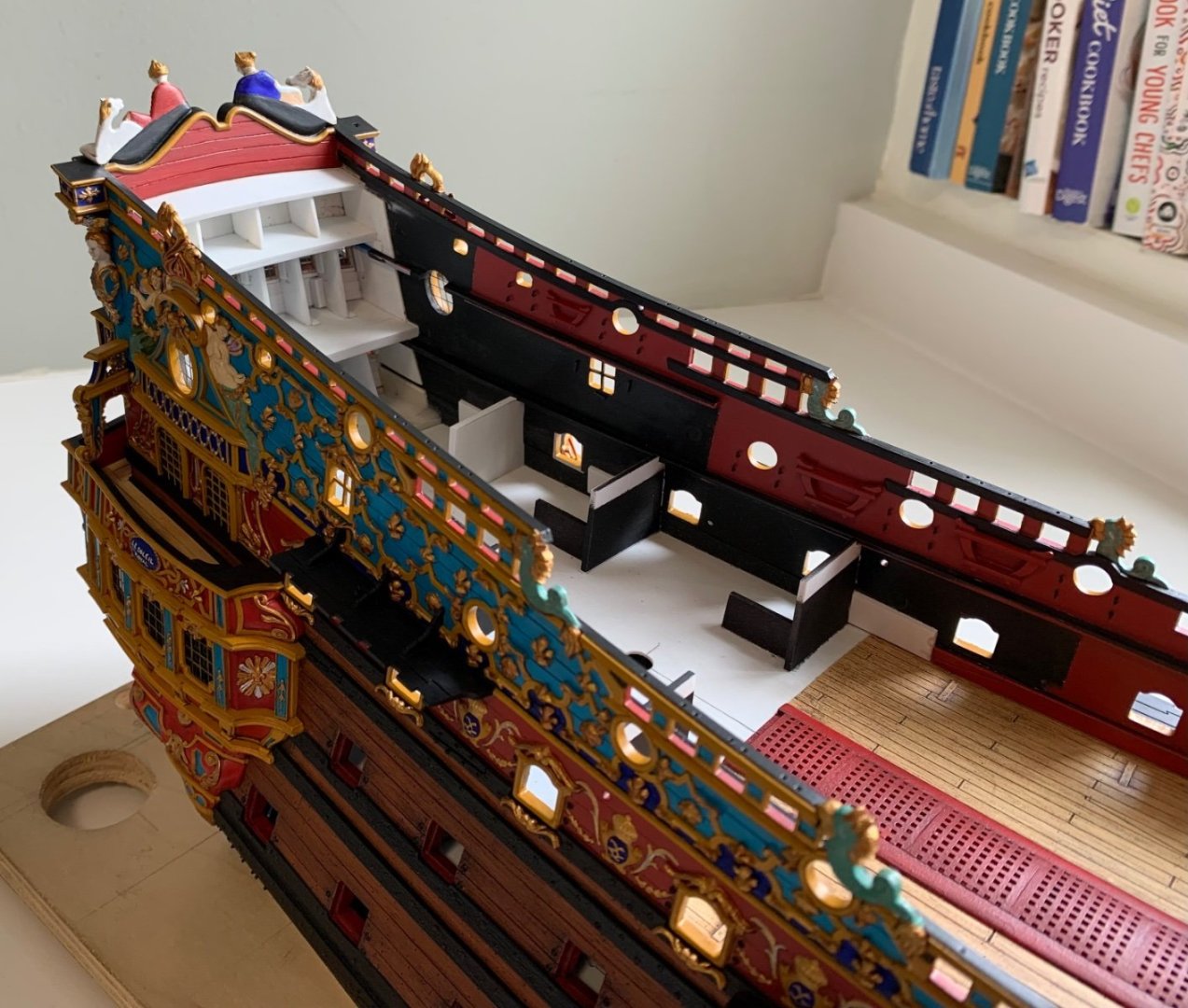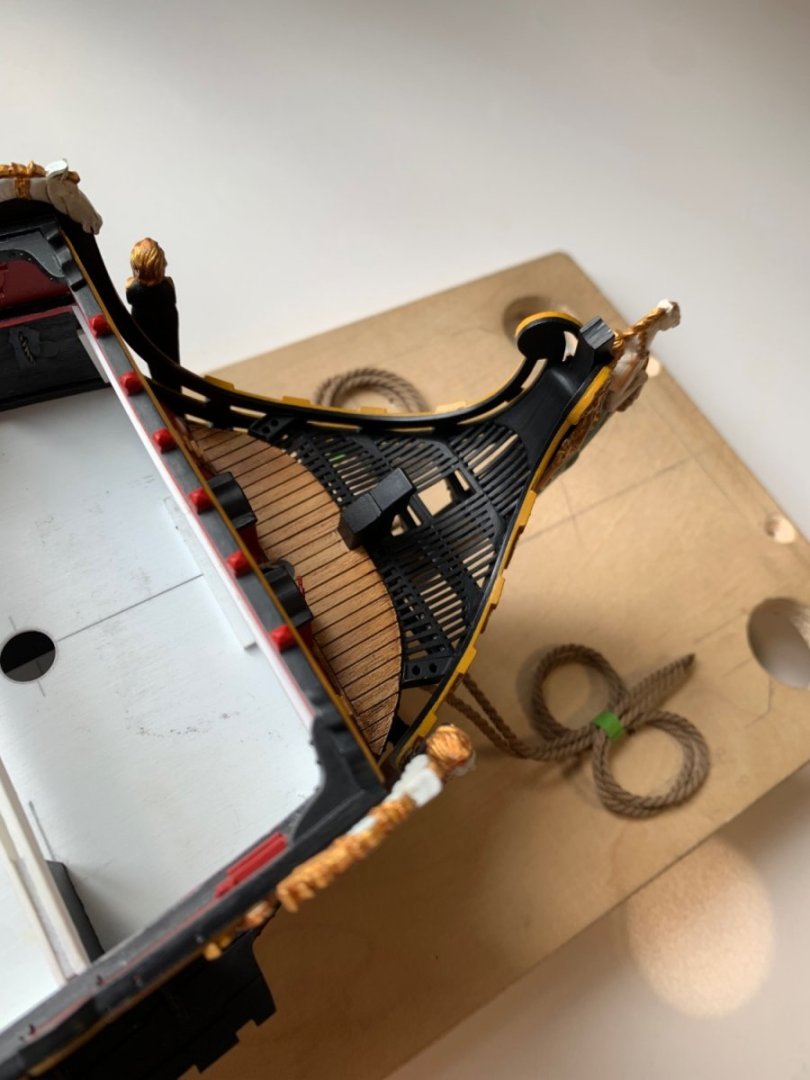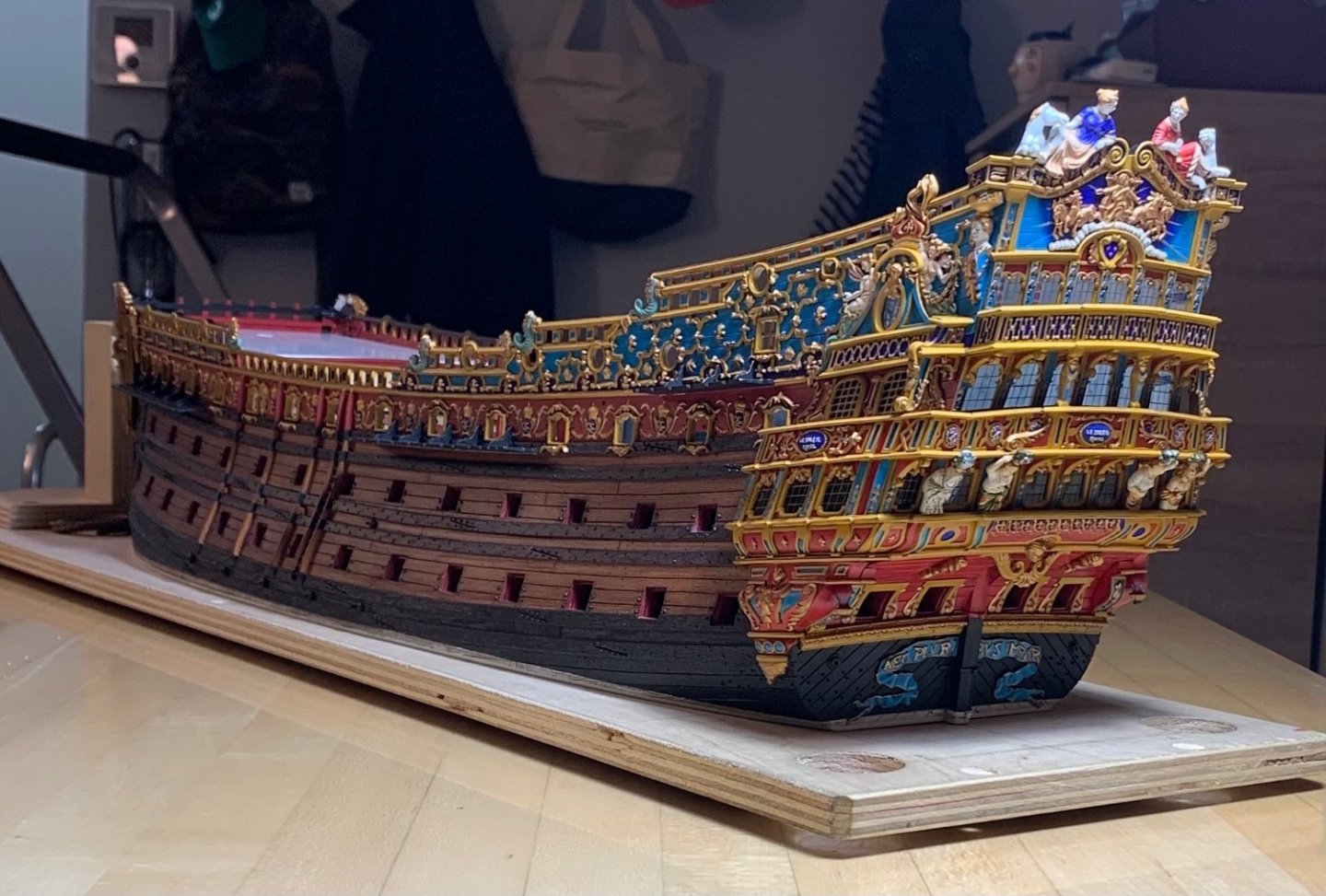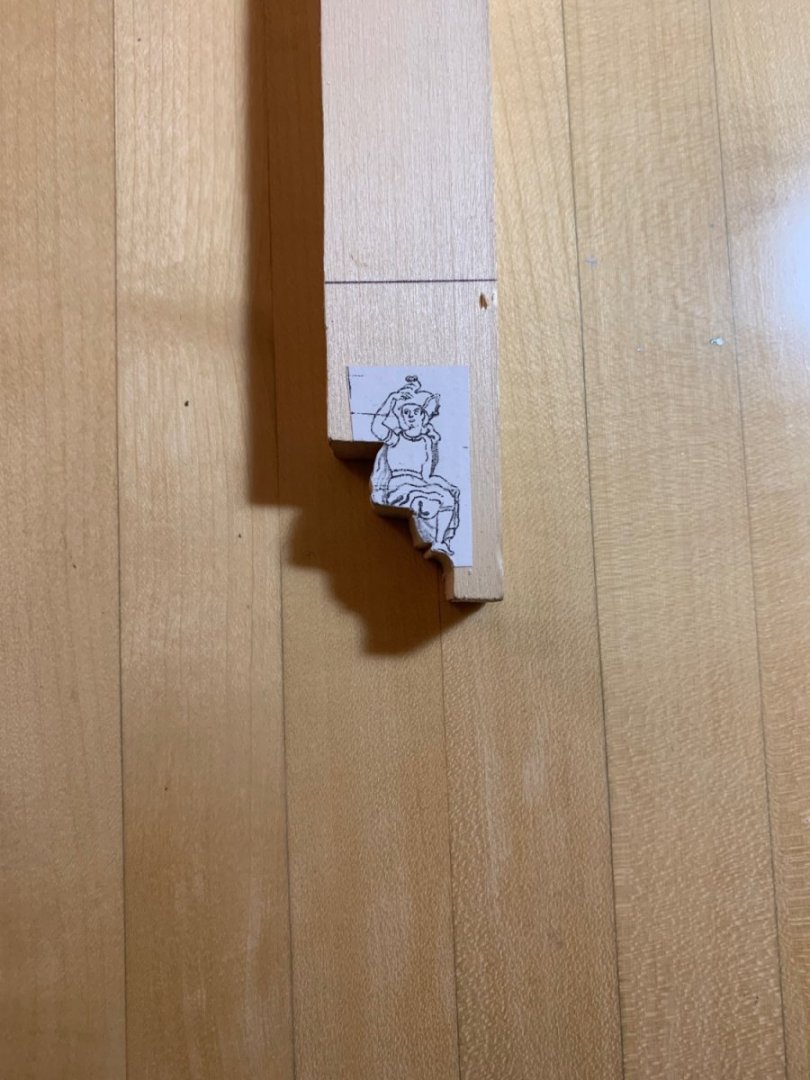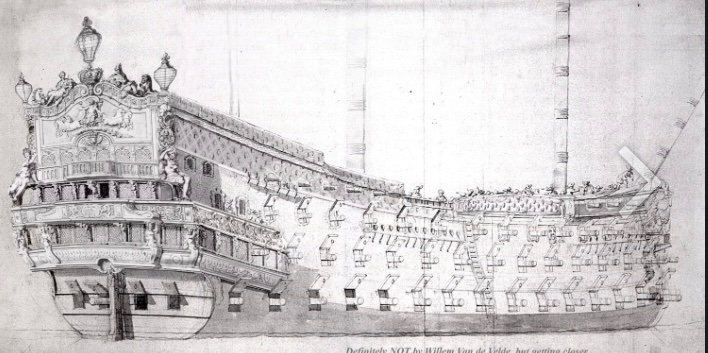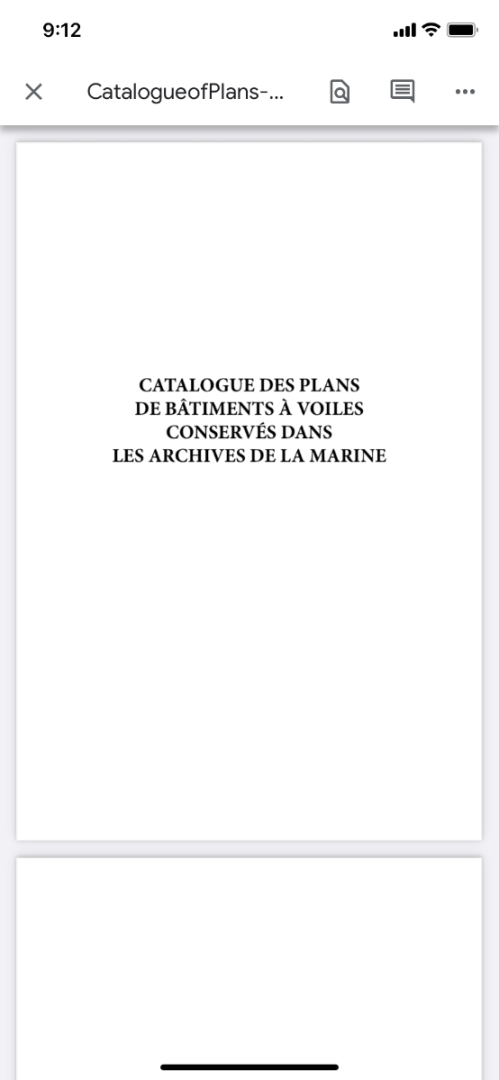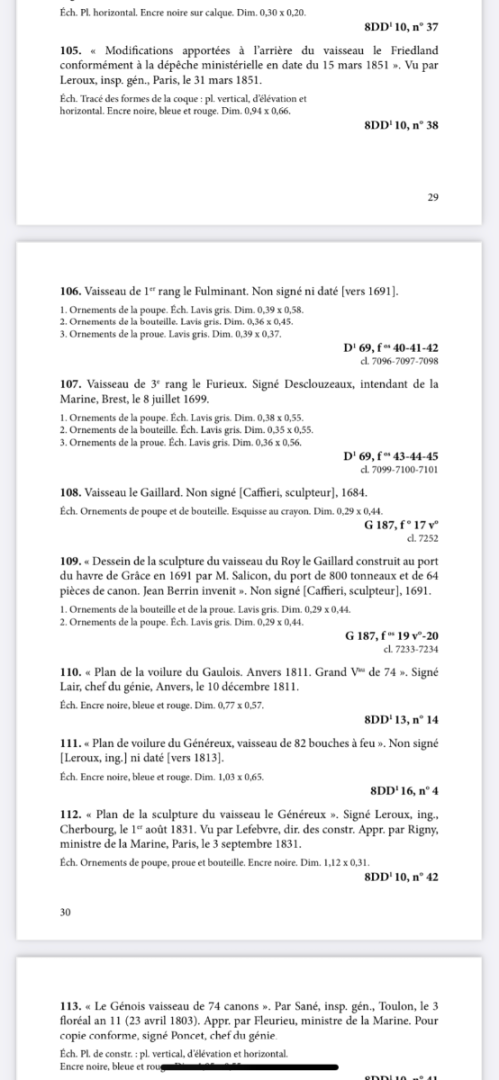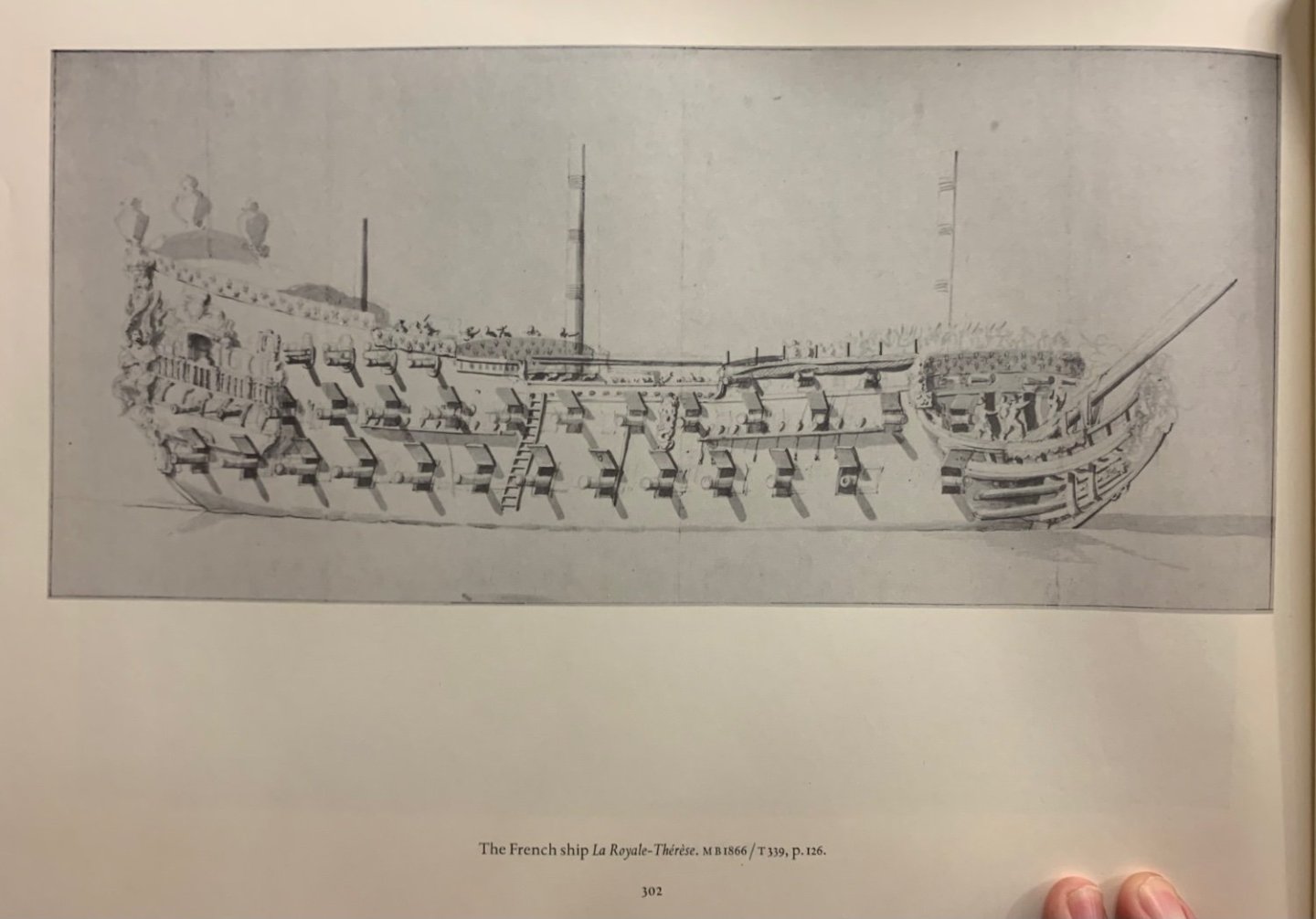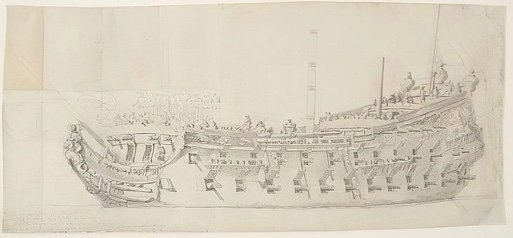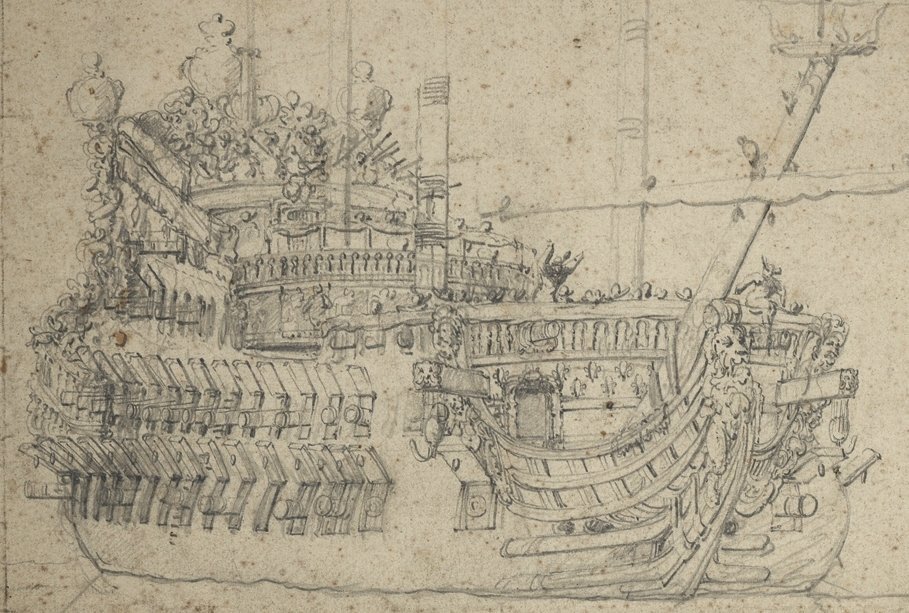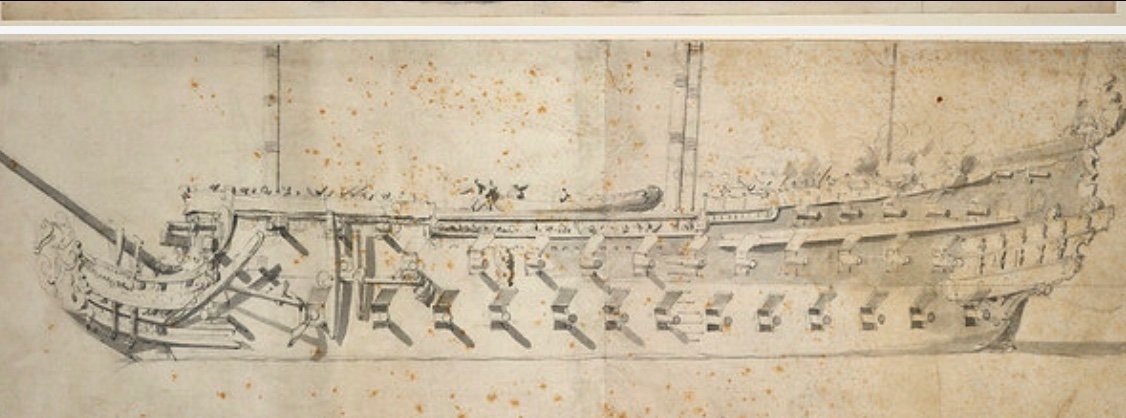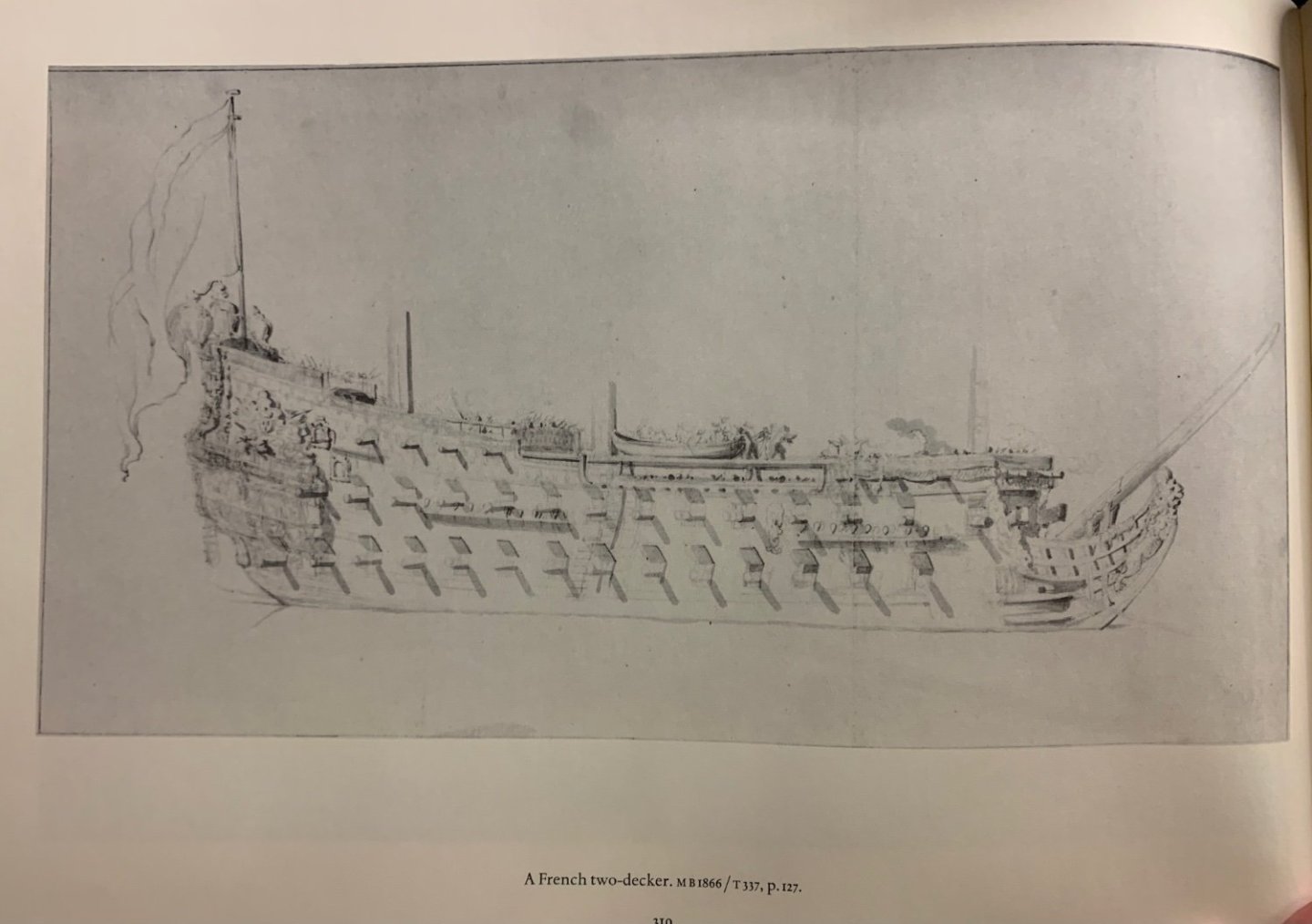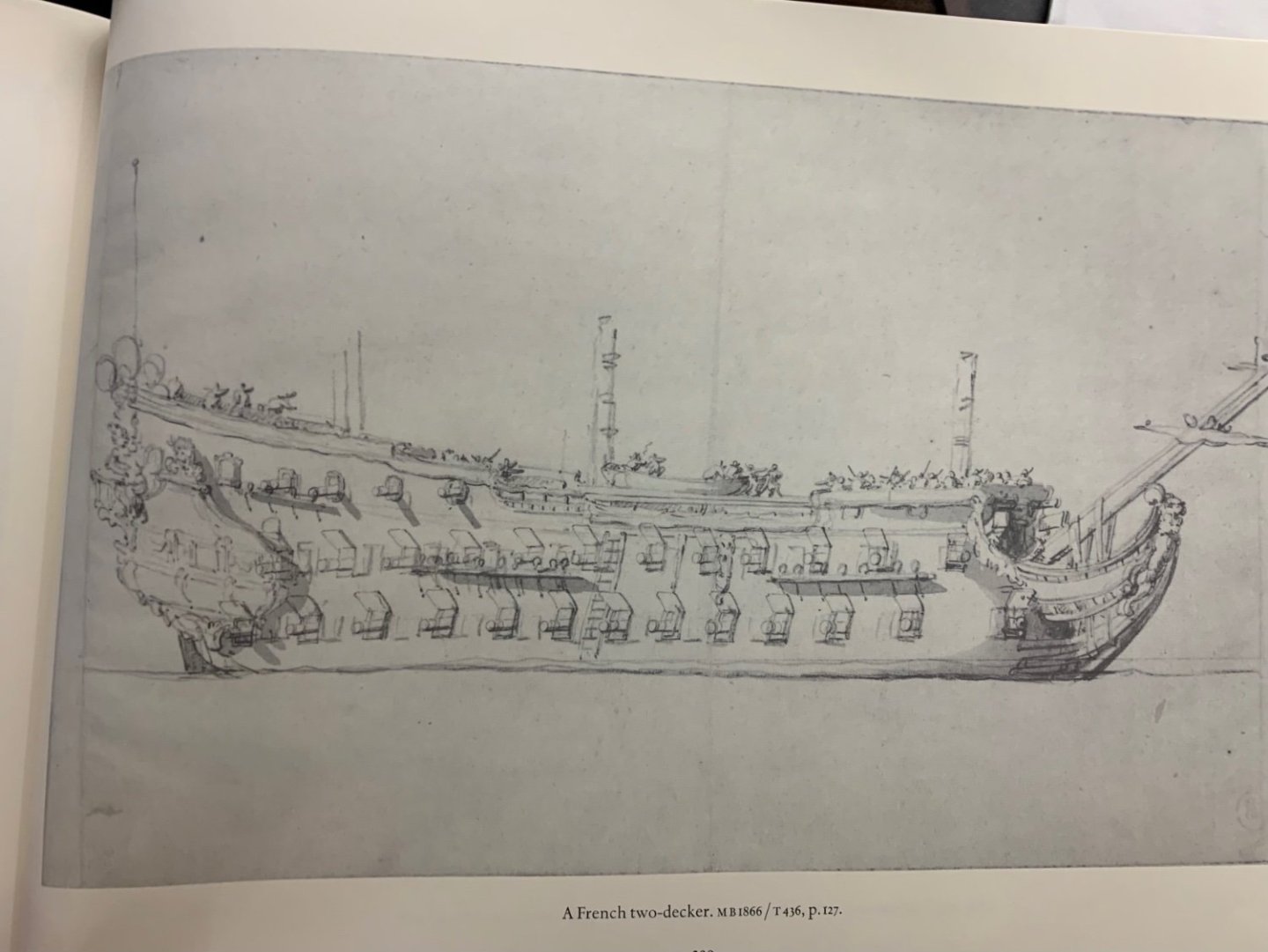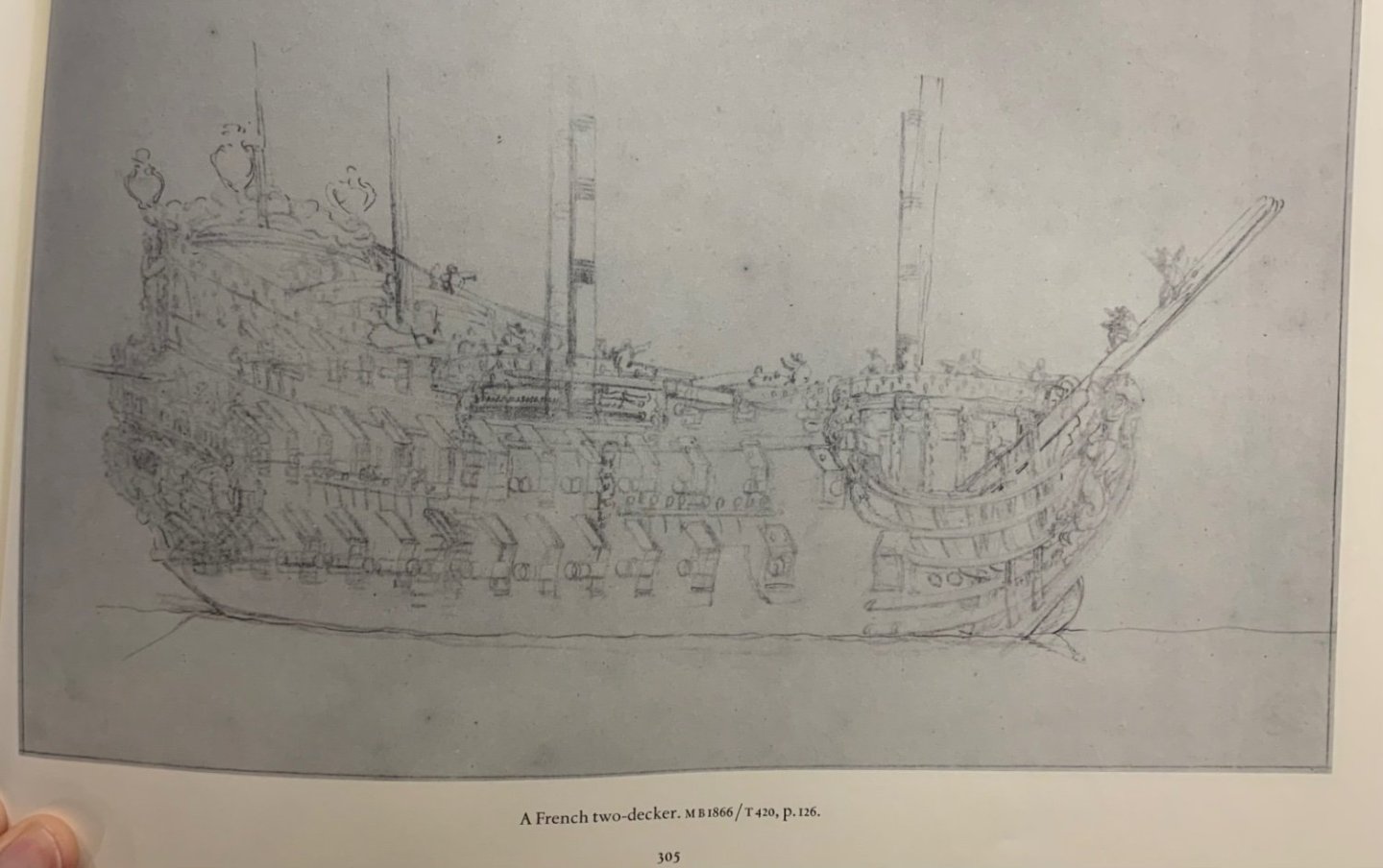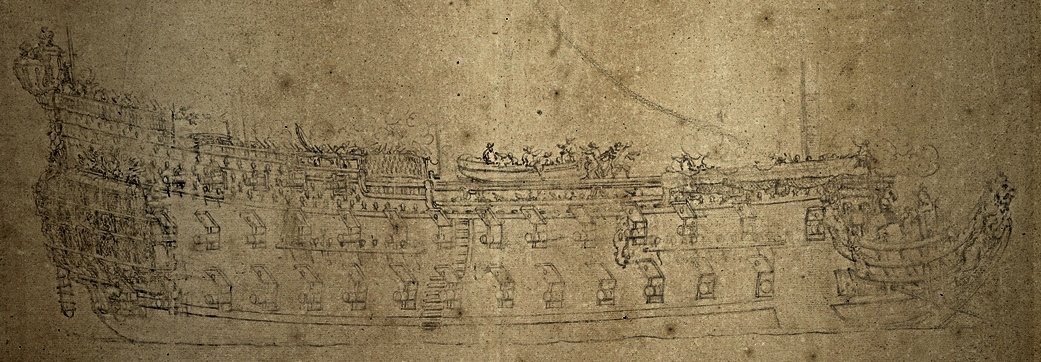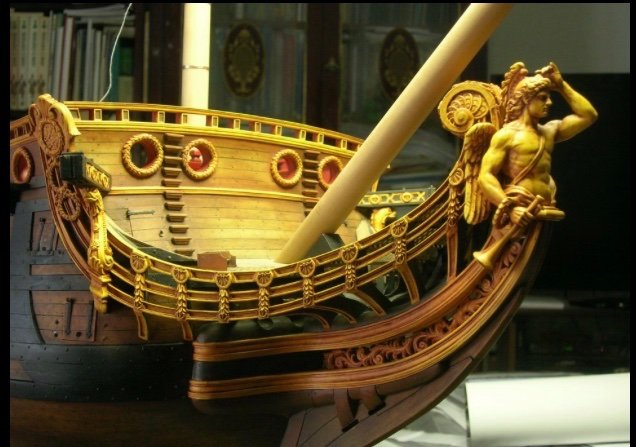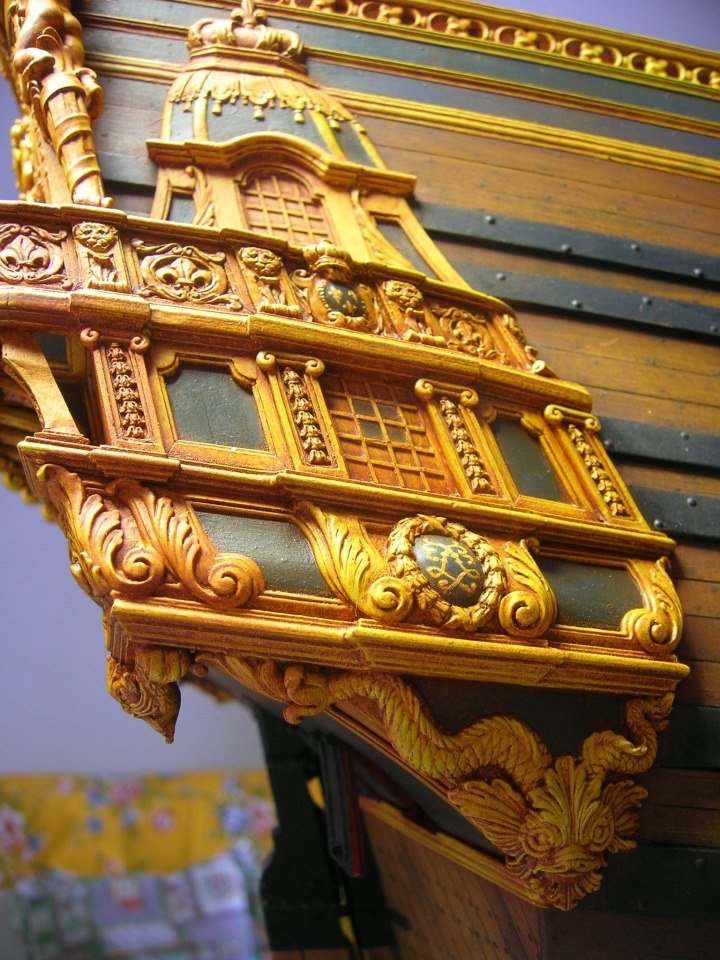-
Posts
3,306 -
Joined
-
Last visited
Content Type
Profiles
Forums
Gallery
Events
Everything posted by Hubac's Historian
-
Bill, your lower deadeyes are 5 MM, correct? And 3 MM for the fore and main tops?
- 1,508 replies
-
- Le Soleil Royal
- Heller
-
(and 1 more)
Tagged with:
-
Marc, it is great to see you back on the forum! Your L’Ambiteaux is looking CAPITAL in her fresh paint. Thank you for the kind words and for checking-in!
- 2,699 replies
-
- heller
- soleil royal
-
(and 9 more)
Tagged with:
-
The paint work is exquisite. That is more like what the ventre-de-biche color is supposed to look like. It looks as though the flood caused black mold to grow along the baseboards. Did you cut away and replace the bottom foot of sheetrock? Be very careful of black mold - a serious danger to your respiratory health.
-
Yeah, there are a number of really good block suppliers out there, but the shaping of the Dockyard blocks is really superb, and they offer the smallest sizes. Their violin blocks look particularly good to me. Thank you guys for all the kind words!
- 2,699 replies
-
- heller
- soleil royal
-
(and 9 more)
Tagged with:
-
Yesterday witnessed the arrival of our first adult dining table and chairs which, sadly, ushers out the butcher block trestle table that was my work station and the backdrop of this project for the past six years. It was a bitter-sweet day because I love that old workhorse of a table. I bought it second-hand for $50 and refinished the top three times. On the other hand, it is very nice to walk into our place and immediately see a touch of sophistication. There will be no painting or gluing on that marble-top table, though! Fortunately, IKEA makes a very nice birch gate-leg table with built-in drawer storage, which will soon become my new designated work station. In the meantime, though, I wanted to get the model to a stage of crispness and clarity before I had no place for paint re-touching. Please forgive me my self-indulgence. Here is where we are at, presently: I am very satisfied with the head-grating, and the way that all of the head elements integrated together: One thing that was niggling on my conscience, though, was the fact that the aft headrail rosettes were glued under tension. I have a solid welded bond, and I did wick CA into the joins, where I could, but I wanted a little extra insurance. My solution was to drill two small holes a side, through the third headrail and upper bulwarks, to feed a length of annealed wire. You can see where I painted over the exposed wire with red: And inside, you can see how I twisted the wire ends taught, and then fixed the whole thing in-place with liquid CA. This is all minimally detectable and will quickly fade out of view with everything else that will be going on around it. I feel better now 🙂 I made a start at roughing out the figure of Africa. I had quite a lot of the same wood (linden, maybe) that I used for the lower quarter galleries. Unfortunately, this material really isn’t suitable for carving fine detail. I will have to get my hands on a little boxwood, or some fruit wood like apple or pear. A little fun with pictures. Here, the juxtaposition with John Ott’s near-Van de Velde: As I’ve said before, Heller really does manage to capture the early sheer of these ships very well. Despite it’s many imperfections, my hypothetical recreation does, I think, capture something of the essence of what may have been. Moving forward, I have been figuring out where I will source line and blocks and pins and cleats. I really like the blocks from Dockyard Models, and the polyester rope from Ropes of Scale. I can get most accessories I need from Dockyard, but anything else I will obtain from HisModel. For the time being, and until the new worktable arrives, Soleil Royal Redux will shelter in her dry-dock: I will occupy myself, until then, taking measurements of the materials I need, and developing an understanding of what needs to be done with the rigging. Along those literal “lines,” John Ott has been a tremendous help in sharing his sources, and the rig and belay plan that he has developed for his model. My belay plan will likely look a little different, but only because I do not intend to make the same use of pinrails. If anyone is not yet aware, John has begun a build log for his magnificent Soleil Royal of 1693, which can be found here: Many thanks to you John, for your help and generosity, and to all of you for sticking with this project for such an absurdly long time. It is greatly appreciated!
- 2,699 replies
-
- heller
- soleil royal
-
(and 9 more)
Tagged with:
-
To compensate for the long topmasts, I raised my lower main mast by 3/8”, if I remember correctly, and the fore and mizzen lower masts were raised, accordingly. In order to improve the spread of the topmast shrouds, I made wider tops from scratch. The mast sections which are really overlong are the t’gallants. Those I will make from scratch and shorten.
- 1,508 replies
-
- Le Soleil Royal
- Heller
-
(and 1 more)
Tagged with:
-
“Delicious” dichotomy, indeed, John! That precisely expresses my own fascination with ships of this epoch. I am so glad that you are finally bringing your unique expression and perspective to light in a build-log for your ship. I am absolutely certain that many others, previously unaware, will be absolutely gob-smacked by your talents. Not a fine-scale modeler? I stridently disagree!🤩 So, one thing that has always bothered me a little is that so many vocal types on the various message boards love to complain vociferously about the kit’s numerous flaws and inaccuracies - essentially calling it a pile of junk - yet, they hold Tanneron’s model in the highest regard. Well, what you have so perfectly illustrated is the fact that the Heller kit is really a very direct copy of the Tanneron model; many of the Heller flaws originate in the Tanneron model. The thing I find so remarkable about the origination of the Prestige Series is that Heller made it possible, for a moderate sum, to bring faithful copies of world-class museum models into the average person’s home. They are flawed, yes, but aren’t we all to some degree or other? When I first spied the very pressing I am building from, in my next door neighbor’s hobby room shelves, back in 1981 (he was building the 1:200 Heller Royal Louis, at the time), I was instantly hooked, and thereafter obsessed with this magnificent puzzle of a ship. Unfortunately, Mark Hansen did not live long enough to build the ship in retirement, as he had planned to. All of this informs my view that there aren’t any “perfect” ship models. All models are constrained by the quantity and coherence of their service records and portraiture. In my opinion, an effective scale model is one that strives for fidelity to the period, while stimulating debate about its various details, and INSPIRING others to see what else may be possible. John’s Soleil Royal is all that and more!
- 106 replies
-
- Soleil Royal
- Ship-of-the-line
-
(and 2 more)
Tagged with:
-
Your point about the hierarchy of ornament is well-taken and correct. If there is a place for human forms, where they are otherwise absent, it would certainly be at the figurehead. Frolich’s version of L’Ambiteaux carries a lion as it’s figurehead, while the builder below employs this human figure: I’m not sure whom this figure from Greek mythology represents, exactly, but my guess would be Apollo, as that is the character most closely associated with Louis XIV. He is carrying a victory laurel and Fame’s trumpet proclaiming his dominance and superiority to all comers. I do not think there is anything inherently wrong with an effigy of Zeus as your figurehead, even if you don’t employ and other human figures, elsewhere in the decor.
-
Although, one idea that occurs to me straight away concerns the lower finishing of the quarter gallery. L’Ambiteaux employs these twist-tail dolphins for the lower finishing: It seems to me that a stylized eagle with it’s outstretched wing, extending into the stern counter, could also carry a clutch of lightning bolts in its clenched talons, below.
-
There would be nothing simple about that at all, really. You have the ornamental sets for L’Ambiteaux to use as a general style-guide, but the monograph for that ship ignores the upper bulwarks completely, and the bow and quarters for your project still need to make specific reference to the underlying allegory. I’ll be happy to follow along, though. If I happen to have any imagery that is helpful, I will be sure to post it, here.
-
I had not noticed, Ian. I will say, though, that it is our quirks that endear us to each other.
- 536 replies
-
- Quadrireme
- radio
-
(and 1 more)
Tagged with:
-
Fabulous progress, Ian. It is nice to hear your voice in the videos.
- 536 replies
-
- Quadrireme
- radio
-
(and 1 more)
Tagged with:
About us
Modelshipworld - Advancing Ship Modeling through Research
SSL Secured
Your security is important for us so this Website is SSL-Secured
NRG Mailing Address
Nautical Research Guild
237 South Lincoln Street
Westmont IL, 60559-1917
Model Ship World ® and the MSW logo are Registered Trademarks, and belong to the Nautical Research Guild (United States Patent and Trademark Office: No. 6,929,264 & No. 6,929,274, registered Dec. 20, 2022)
Helpful Links
About the NRG
If you enjoy building ship models that are historically accurate as well as beautiful, then The Nautical Research Guild (NRG) is just right for you.
The Guild is a non-profit educational organization whose mission is to “Advance Ship Modeling Through Research”. We provide support to our members in their efforts to raise the quality of their model ships.
The Nautical Research Guild has published our world-renowned quarterly magazine, The Nautical Research Journal, since 1955. The pages of the Journal are full of articles by accomplished ship modelers who show you how they create those exquisite details on their models, and by maritime historians who show you the correct details to build. The Journal is available in both print and digital editions. Go to the NRG web site (www.thenrg.org) to download a complimentary digital copy of the Journal. The NRG also publishes plan sets, books and compilations of back issues of the Journal and the former Ships in Scale and Model Ship Builder magazines.





